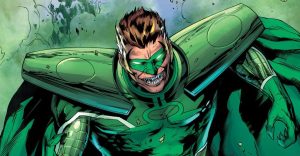The FF7-Like Pokémon Colosseum Is The Series’ Overlooked Gem

While the Pokémon series continues to enjoy tremendous success with each associated game, the spin-off Pokémon Colosseum is a unique entry in the franchise that is largely overlooked. Deviating from the formulaic popularity of the mainline Pokémon games, Pokémon Colosseum offers a more traditional RPG experience, providing a different approach to Pokémon with new game mechanics and a non-conventional story that’s reminiscent of Final Fantasy 7.
Pokémon Colosseum was originally released for the Nintendo GameCube in 2003 – about six years after FF7 debuted on the original PlayStation. Developed by company Genius Sonority, the game contains both a single-player story and a multiplayer battle mode reminiscent of the Pokémon Stadium games. Additionally, Pokémon can be traded to and from Pokémon Ruby and Sapphire (as well as the Game Boy Advance’s other mainline Pokémon titles) once Colosseum‘s main story has been completed.
Since its release, Pokémon Colosseum has received mixed reception from the community. IGN rated the game a 7.5/10, complimenting Pokémon Colosseum for decently executing on original ideas. The UMass Lowell Connector, by contrast, appraised the game with a “D” rating, calling its new mechanics “irritating“. Even still, Colosseum‘s commitment to unique mechanics and plot elements is how the game has remained worthy of discussion years later, and its similarities with FF7 can’t be overlooked.
Pokémon Colosseum Compared To Mainline Pokémon

Though Pokémon Colosseum is just a spinoff, it establishes itself well against the Pokémon mainline game through uniquely different gameplay and story. Rather than starting as a young, new trainer aspiring to be the Pokémon Champion, players take the role of an experienced trainer and former criminal (named Wes by default) who has turned against his organization, the villainous Team Snagem. Aided by a girl named Rui, Wes opposes both his former colleagues and the enigmatic Team Cipher to thwart their evil plans. Unlike normal Pokémon adventures, Pokémon Colosseum has no Pokédex to complete nor any Gym Leaders to challenge, and instead focuses exclusively on the plot.
The way that Pokémon are obtained and battled in Pokémon Colosseum varies from the main series as well. All Pokémon battles are fought in the Double Battle format. In a twist, Pokémon Colosseum breaks a rule established in the first Pokémon games and lets players steal opposing trainers’ Pokémon. Colosseum‘s unique Pokémon variety, Shadow Pokémon, are creatures corrupted by Team Cipher’s experimentation, becoming violent and emotionally closed-off.
Wes can utilize a special Snag Machine to steal Shadow Pokémon from trainers and add them to his own team, either leaving them in their Shadow state or restoring them to their original forms. As Pokémon Colosseum features no wild Pokémon encounters, new Pokémon must be obtained through this method, adding an extra layer of challenge to the game. In contrast with the variety of Pokémon available in a mainline game, Colosseum features only a set number of Shadow Pokémon, so players must make do with limited options.
Pokémon Colosseum & Final Fantasy 7 Story Comparisons

Pokémon Colosseum shares a number of elements in common with another popular RPG, Final Fantasy 7. From a story perspective, Wes and FF7‘s Cloud Strife start off in similar positions. Pokémon Colosseum begins with Wes, a former thief, betraying Team Snagem and blowing up their base; similarly, Cloud begins FF7 by bombing a Mako reactor, a direct affront to the Shinra Electric Power Company, for whom he was employed as a SOLDIER. Both games feature an overall dark, mature tone balanced occasionally by instances of levity and humor. In doing this, the plots of Colosseum and FF7 can be taken seriously without ever seeming too lighthearted or too edgy.
Pokémon Colosseum and Final Fantasy 7 both benefit from having relatively small RPG parties. Colosseum contains 49 obtainable Shadow Pokémon; combined with Wes’ starting partners, Espeon and Umbreon, only 51 Pokémon are available for use – a staggeringly low amount for a Pokémon game. However, like in many traditional RPGs, Colosseum forces players to bond with their new teammates to realize their full potential. Only by using a Shadow Pokémon in battle and bonding with it can the creature finally be purified, allowing it to gain levels and evolve again. FF7‘s dating and affection mechanic works in a similar way, as Cloud must put effort into becoming close with his party members in order to unlock special scenes with them at the Gold Saucer. In both instances, having fewer characters available allows for deeper connections to be made with them.
Pokémon Colosseum’s Setting Compared to Final Fantasy 7

Additionally, Pokémon Colosseum and Final Fantasy 7‘s settings share similar aesthetics. One of Pokémon Colosseum‘s main locations, Pyrite Town, is a seedy area filled with rusty, dilapidated buildings. The town is a haven for criminals, as well as trainers who would stoop to using a Shadow Pokémon. In many ways, Pyrite Town is visually reminiscent of FF7‘s Midgar, particularly the city’s Sector 7 slums. Other areas of Pokémon Colosseum‘s Orre Region are also comparable to FF7‘s locations. For example, Rui’s grandparents’ house can be visited in Agate Village, a lush and water-filled escape from the Orre Region’s barren wasteland environment where Shadow Pokémon can be purified. Similarly, Aerith’s mother’s house in FF7 is filled with greenery and water, unlike the rest of the Sector 5 slums.
Following up gritty, rundown settings with calm, beautiful ones is a narrative dynamic that both Pokémon Colosseum and FF7 understand. Agate Town contains the means by which a Shadow Pokémon’s closed heart can be opened once more; similarly, Cloud first begins to drop his cold exterior and open up to Aerith during their time at her house. These contrasts give players breathing room from the gritty reality of the games’ missions and allow character growth to occur.
Pokémon Colosseum Compared To Pokémon XD: Gale of Darkness

Pokémon XD: Gale of Darkness, Pokémon Colosseum‘s sequel, may be a factor in how Pokémon Colosseum is received today. Gale of Darkness greatly expands upon the Shadow Pokémon mechanic, making the corrupted Pokémon more competitively viable with unique moves and super-effective damage against non-Shadow Pokémon. Unlike how Kyogre and Groudon cannot be caught in Pokémon Colosseum despite being on the game’s cover, the special Shadow Lugia on Gale of Darkness‘ cover can be captured. Moreover, should players fail to catch a Shadow Pokémon, the game offers another chance to obtain each one further into the game.
For all its updated mechanics, however, Gale of Darkness can feel a bit less original than Pokémon Colosseum. Whereas Colosseum establishes a new region, new types of Pokémon, and a new way to catch Pokémon, Gale of Darkness simply borrows these concepts. The game’s protagonist, Michael, plays more of a traditionally heroic role compared to Wes’ background of crime and betrayal. Gale of Darkness even reuses Pokémon Colosseum‘s Orre Region, revisiting a number of locations from the first game.
Ultimately, Pokémon Colosseum‘s greatest strength is its originality. The game manages a compellingly unique experience that has not been replicated in a Pokémon game since its release, maintaining mixed reviews despite sharing strengths with a critically acclaimed game like Final Fantasy 7. Whether or not the game or its premise will ever be revisited in a future Pokémon game, Pokémon Colosseum remains one of the series’ most overlooked gems.
Source: IGN, The UMass Lowell Connector
About The Author

















